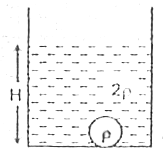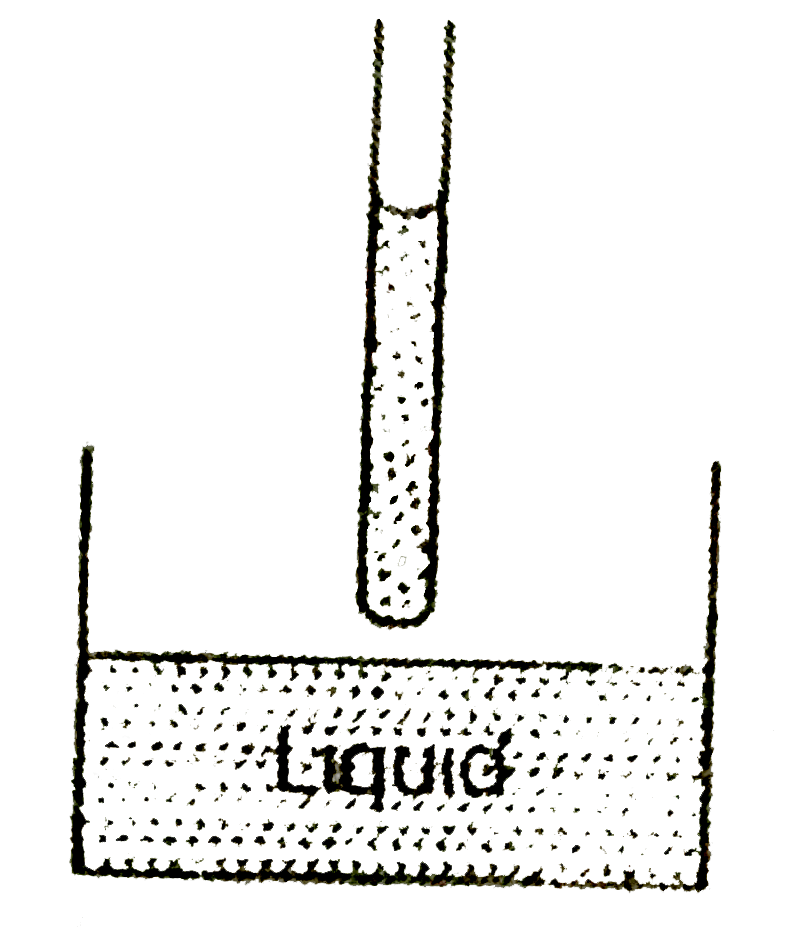When you measure a liquid the reading should be taken at the bottom of the ..... (concave/convex) meniscus.
To solve the question, "When you measure a liquid the reading should be taken at the bottom of the ..... (concave/convex) meniscus," we can follow these steps:
1. Understanding Meniscus:
- When you pour a liquid into a container, the surface of the liquid curves due to surface tension. This curve is called the meniscus.
2. Types of Meniscus:
- There are two types of meniscus: concave and convex.
- A concave meniscus curves downwards, forming a "U" shape.
- A convex meniscus curves upwards, forming a dome shape.
3. Reading the Meniscus:
- For accurate measurement, it is important to know where to take the reading:
- If the meniscus is concave, the reading should be taken at the bottom of the curve (the lowest point).
- If the meniscus is convex, the reading should be taken at the top of the curve (the highest point).
4. Conclusion:
- Since the question asks for the reading to be taken at the bottom of the meniscus, we conclude that the meniscus in question must be concave.
Final Answer:
The reading should be taken at the bottom of the concave meniscus.
---
- When you pour a liquid into a container, the surface of the liquid curves due to surface tension. This curve is called the meniscus.
- There are two types of meniscus: concave and convex.
- A concave meniscus curves downwards, forming a "U" shape.
- A convex meniscus curves upwards, forming a dome shape.
- For accurate measurement, it is important to know where to take the reading:
- If the meniscus is concave, the reading should be taken at the bottom of the curve (the lowest point).
- If the meniscus is convex, the reading should be taken at the top of the curve (the highest point).
- Since the question asks for the reading to be taken at the bottom of the meniscus, we conclude that the meniscus in question must be concave.
The reading should be taken at the bottom of the concave meniscus.
Topper's Solved these Questions
- PHYSICAL QUANTITIES AND MEASUREMENTBOOK - ICSECHAPTER - PHYSICAL QUANTITIES AND MEASUREMENTEXERCISE - EXERCISE (SECTION II) E. Give reasons for the following.
4 Videos
- PHYSICAL QUANTITIES AND MEASUREMENTBOOK - ICSECHAPTER - PHYSICAL QUANTITIES AND MEASUREMENTEXERCISE - EXERCISE (SECTION II) F. Distinguish between the following
6 Videos
- PHYSICAL QUANTITIES AND MEASUREMENTBOOK - ICSECHAPTER - PHYSICAL QUANTITIES AND MEASUREMENTEXERCISE - EXERCISE (SECTION I) C. Write T for True and F for False. Correct the false statements.
5 Videos
- MOTIONBOOK - ICSECHAPTER - MOTIONEXERCISE - TEST YOURSELF (NUMERICAL)
13 Videos
- SOUNDBOOK - ICSECHAPTER - SOUNDEXERCISE - EXERCISES (PICTURE STUDY)
4 Videos
Similar Questions
How do you measure density of a liquid using a density bottle?
View SolutionHow should we take the reading of a liquid level, if the meniscus of the surface is concave
View SolutionHow should we take the reading of a liquid level, if the meniscus of the surface is convex .
View SolutionA container made of glass (μ=1.5) contains a liquid. A ray of light passing through the liquid falls on the bottom of the container at an angle of incidence θ=tan−1(0.9) and completely polarized. The ray should strike the bottom of the container at an angle of incidences so that it undergoes total internal reflection
View SolutionA small ball of density ρ is placed from the bottom of a tank in which a non viscous liquid of density 2ρ is filled . Find the time taken by the ball to reach the surface of liquid and maximum height reached above the bottom of container . (Size of the ball and any type of drag force acting on the ball are negligible )

View SolutionA tank is filled with a liquid upto a height H, A small hole is made at the bottom of this tank Let t1 be the time taken to empty first half of the tank and t2 time taken to empty rest half of the tank then find t1t2
View SolutionA tank is filled with a liquid upto a height H. A small hole is made at the bottom of this tank. Lett1 be the time taken to empty first half of the tank and t2 the time taken to empty rest half of the tank. Then find t1t2.
View SolutionA long glass capillary (radius R) is taken out of liquid (surface tension S and density ρ) in vertical position. Angle of contact everywhere is zero. Atmospheric pressure is P0. It is observed that the capillary retains some liquid.

The radius of curvature of meniscus at the bottom of tube is
View SolutionA convex lens is held 45cm above the bottom of an empty tank. The image of a point at the bottom of a tank is formed 36cm above the lens. Now, a liquid is poured into the tank to a depth of 40cm. It is found that the distance of the image of the same point on the bottom of the tank is 48cm above the lens. Find the refractive index of the liquid.
View SolutionThe convex surface of a thin concave-convex lens of glass of refractive index 1.5 has a radius of curvature 20 cm. The concave surface has a radius of curvature 60 cm. The convex side is silvered and placed on a horizontal surface as shown in figure. (a) Where should a pin be placed on the axis so that its image is formed at the same place ? (b) If the concave part is filled with water (mu = 4/3), find the distance through which the pin should be moved so that the image of the pin again coincides with the pin.

View Solution
